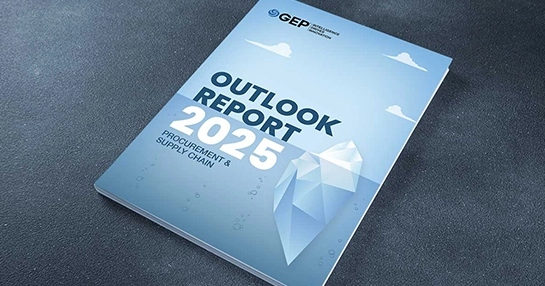
AI and Automation in Indirect Procurement: Why the Real Shift Is Bigger Than Speed and Savings
- AI is only useful if it helps redesign how procurement works, not just speed up tasks.
- People guide the context and decisions, AI assists with insight and scale.
- Technology needs strong governance and skilled teams to drive real transformation.
November 22, 2025 | Procurement Software 5 minutes read
Everyone talks about automation like it is some magic button that makes work faster. In indirect procurement, the truth is a lot more interesting. The real value does not come from reducing clicks or shaving seconds off approvals. It comes from rethinking how procurement fits into the business. Automation gives procurement leaders the opportunity to build smarter workflows, remove blind spots, and turn messy spend into insight driven strategy.
But there is a catch. AI only works when procurement stays in control of context and data. Systems can suggest. People still decide what matters. Technology sets the foundation. Culture and capability make it meaningful. When those things come together, indirect procurement stops being a support function and starts becoming a strategic lever.
Right now, this shift is happening quietly. The flashiest part may be the tools, but the real transformation comes from deeper insights, integrated systems, and new ways of operating. Indirect spend used to feel like a headache no one wanted to fix. Today it is where organizations build resilience and competitive edge. Leaders do not ask whether to digitize anymore. They ask how to design intelligent ecosystems that scale with the business and make complexity more manageable.
So what exactly counts as indirect procurement
Indirect procurement covers everything that keeps the organization running. Software, marketing services, utilities, maintenance, consulting, travel, office supplies. These purchases do not end up in the products you sell, but you cannot operate without them. Because these needs come from all corners of the business, ownership gets scattered. That is why controlling indirect spend is hard. It touches every team. It changes constantly. It has many exceptions.
Digitizing it is not about replacing people. It is about giving procurement better visibility and better control without slowing anyone down.
AI and Automation in Indirect Procurement
Redesign workflows, improve visibility, and elevate procurement’s strategic impact.
Contact GEP experts
Efficiency is great, but not enough
For years, automation in procurement focused on processing transactions quickly. Requisition to purchase order to invoice. Get approvals. Move things along. Do more with less.
Experienced leaders are asking different questions now:
- How do we eliminate tail spend leakage hidden in email chains and one time vendor use
- When does human judgment outperform automated scoring and when does it not
- How do we use AI without compromising trust with stakeholders
These are not efficiency questions. They are ecosystem questions. They challenge the structure of procurement, not the surface level tasks. And they are exactly where the biggest returns are found.
Spend analysis is no longer just classification
Traditional analytics told you what you bought and with whom. AI gives you something more useful. It brings context. Contract terms. Usage trends. Supplier performance signals. Budget alignment. Risk alerts.
The tricky part is data fragmentation. Procurement data lives in ERP, finance tools, contract repositories, sourcing platforms, emails, stakeholder spreadsheets. AI can help connect everything, but procurement must lead the rules of the road. Models need guidance. Outputs need review. Insights become valuable only when someone uses them to influence decisions. So humans remain the drivers of improvement.
Discover Now – Indirect Procurement Software
Sourcing automation works best as support, not replacement
Indirect sourcing does not run on rigid rules. Creative and professional services, marketing, agency work, and legal needs can shift overnight. Automation can help by running quick bids or recommending suppliers. It can learn from past outcomes and surface options procurement might miss.
But final supplier selection still relies heavily on relationships, risk judgment, and persuasive communication. The most effective procurement teams treat AI as a partner. It expands what they see and how they analyze. They keep ownership of the narrative and negotiation.
Contracts become more than stored files
Every organization has thousands of contracts. Very few actually unlock insights from them. Scanning a PDF into a system is not transformation. The real change happens when AI:
- Tags clause level information
- Highlights risk language and financial triggers
- Connects obligations to supplier performance
- Feeds data into sourcing and budgeting
This turns static documents into actionable intelligence. It reduces compliance gaps and strengthens commercial decisions. Getting there requires legal collaboration and methodical governance, but it pays off steadily.
Eager to learn more on Agentic AI?
Download The Agentic AI Playbook to see how leaders are moving from automation to autonomy.
Download Now
P2P automation shapes behavior, not just workflow
Automation can speed up approvals and issue POs faster. But that is not where the magic is. The biggest benefit is behavioral. AI can guide users at the exact moment they make a purchase request. It can suggest compliant suppliers. It can flag missing details early. It can simplify catalog navigation. When the system makes good choices effortless, people stay inside it rather than buying off contract.
Every exception that enters the process becomes a learning loop. The system evolves. Control increases without adding friction.
Governance keeps AI aligned with reality
Bringing automation into decision making introduces new accountability questions. Who owns the training data. Who audits model fairness. What happens when global policy conflicts with local law.
Mature procurement organizations do not wait for these issues to surprise them. They create shared ownership models and transparency rules. Governance becomes a safeguard for trust. It ensures AI amplifies good practices instead of creating new risks.
Scalable architecture matters more than more tools
Most teams already have plenty of software. The struggle is that their systems do not talk to each other. Real success with AI means building connected architecture.
- Cloud platforms
- Open APIs
- Modular deployment
- Real time data exchange
Indirect procurement touches ERP, finance, operations, suppliers. Silos slow everything down. Good architecture removes those barriers.
Talent and change make the difference
AI changes what people do. It moves their work closer to insight, influence, and stakeholder engagement. But the shift requires skills beyond system usage. Storytelling with data. Curiosity. Strategic thinking. Comfort with experimentation. Procurement wins when its people evolve along with its technology.
Culture makes transformation stick.
Final thoughts
AI will not erase the complexity of indirect procurement. It will help human teams manage that complexity with far more confidence and clarity. The goal is not to replace talent. The goal is to empower it. Automation becomes the backbone. People become the advantage. The biggest leap forward comes from reimagining how procurement operates, not from digitizing the same old processes.
Technology matters. Leadership matters more.



